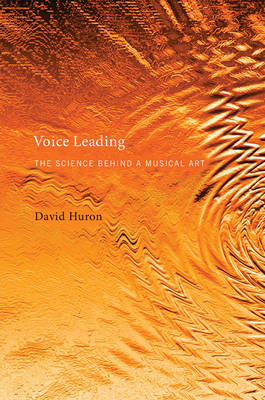
- Afhalen na 1 uur in een winkel met voorraad
- Gratis thuislevering in België vanaf € 30
- Ruim aanbod met 7 miljoen producten
- Afhalen na 1 uur in een winkel met voorraad
- Gratis thuislevering in België vanaf € 30
- Ruim aanbod met 7 miljoen producten
Omschrijving
Voice leading is the musical art of combining sounds over time. In this book, David Huron offers an accessible account of the cognitive and perceptual foundations for this practice. Drawing on decades of scientific research, including his own award-winning work, Huron offers explanations for many practices and phenomena, including the perceptual dominance of the highest voice, chordal-tone doubling, direct octaves, embellishing tones, and the musical feeling of sounds "leading" somewhere. Huron shows how traditional rules of voice leading align almost perfectly with modern scientific accounts of auditory perception. He also reviews pertinent research establishing the role of learning and enculturation in auditory and musical perception.
Voice leading has long been taught with reference to Baroque chorale-style part-writing, yet there exist many more musical styles and practices. The traditional emphasis on Baroque part-writing understandably leaves many musicians wondering why they are taught such an archaic and narrow practice in an age of stylistic diversity. Huron explains how and why Baroque voice leading continues to warrant its central pedagogical status. Expanding beyond choral-style writing, Huron shows how established perceptual principles can be used to compose, analyze, and critically understand any kind of acoustical texture from tune-and-accompaniment songs and symphonic orchestration to jazz combo arranging and abstract electroacoustic music. Finally, he offers a psychological explanation for why certain kinds of musical textures are more likely to be experienced by listeners as pleasing.
Specificaties
Betrokkenen
- Auteur(s):
- Uitgeverij:
Inhoud
- Aantal bladzijden:
- 272
- Taal:
- Engels
- Reeks:
Eigenschappen
- Productcode (EAN):
- 9780262537384
- Verschijningsdatum:
- 26/08/2016
- Uitvoering:
- Paperback
- Formaat:
- Trade paperback (VS)
- Afmetingen:
- 152 mm x 229 mm
- Gewicht:
- 430 g

Alleen bij Standaard Boekhandel
Beoordelingen
We publiceren alleen reviews die voldoen aan de voorwaarden voor reviews. Bekijk onze voorwaarden voor reviews.











